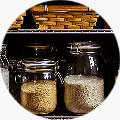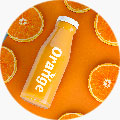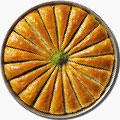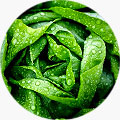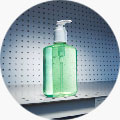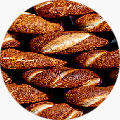Lavash bread has an important place in Turkish culinary culture. Lavash, which is known by different names in various regions of Anatolia, is quite different from phyllo dough made from unleavened dough. It is said that lavash, which is made from leavened dough, was found and made by Turks living a nomadic life in Central Asia. It is also among the information that this bread has been eaten together with kebab for centuries. In the culinary cultures of neighbouring countries in Eastern Anatolia, you may encounter lavash with the name of thin bread. Lavash, which was consumed in abundance in Ottoman cuisine, was also known as thin bread in this region at that time. You can see that lavash, which is widely consumed especially in Erzurum province and its surroundings, is also produced by local producers in big cities such as Istanbul.
Lavash is on the UNESCO Intangible Cultural Heritage List. The only difference of lavash, which is often mixed with yufka, is that yeast is not used in its production. The lavash, which is the result of breaking off small pieces of dough made from flour, water and salt, opening these pieces in a round shape with a rolling pin, and cooking them in earthen or stone ovens, usually called tandoori, after reaching the desired fineness, can be made in large quantities and stored for a long time.
This Turkish flatbread, which is mostly used in preparing wraps in our country, is a must for all kebab varieties. Lavash bread, which creates a unique taste with kebab, is also one of the indispensable tastes of breakfast. Generally preferred with
cigkofte, Adana or Urfa kebab, lavash meat wrap with
cheddar is also preferred in wraps prepared with chicken doner wrap, tantuni or other meat varieties. You can use lavash, which is also used in lahmacun in some regions, for this purpose at home if it is opened thinly. Of course,
ayran is the best accompaniment to lavash. Lavash also goes well with meat and garnishes prepared with onions and parsley.
Lavash, which is recommended to be consumed in moderation like every food, contains all the nutritional values of normal bread. Lavash, which you can choose instead of bread if it is made from whole wheat flour, is very rich in carbohydrates. In addition to the high iron content it contains, B1, B2, B3, B5, B6, B9 vitamins affect brain health positively. The fiber content of lavash, which is also a rich source of folic acid, supports the digestive system to work better.
Erzurum, due to its geographical location, connecting Anatolia to the Caucasus and the Middle East being at the crossroads of important roads rooted, rich cuisine and table has culture. The most important part of this culture Undoubtedly, bread is coming. Where modern ovens are not common The need for bread is traditional methods have been met. Eastern Anatolia bread suitable for the climatic conditions of the region At the beginning of the production methods, the tandoori cooking method. from the past today, tandoori in Erzurum and its environs for both warming and baking bread is used.
Especially since 150-200 years Identified with Erzurum culture, lavash ( bread) are produced in these tandoori. In terms of the material used, it is similar to tandoori bread. similar but as a profession and consumption culture of its own The lavash bread is a special regional dish. is a type of bread. Master apprentice in lavash ovens Despite the difficult conditions, the masters who grew up with to continue this job as a profession. is important. Its thin and long structure keeps it fresh. features such as long-term preservation Lavash, which is different from other breads because of usually meat dishes, raw meatballs and cheese specific to the local culture for breakfast consumed in a variety of ways.
Looking at the historical origin of the word lavash, it is seen that this bread has been common among Turks and especially in Erzurum and its region since ancient times. Lavash, which is an integral part of Erzurum food culture, has its own characteristics from its preparation to the way it is a profession, and has even been the subject of folk songs.
Turkish Lavas bread, also known as lavaş or yufka, is a traditional flatbread that is widely consumed in Turkiye and other neighboring countries. It is a thin and elastic bread that is traditionally made by hand-stretching dough and then baking it on a hot griddle or stone.
Lavas bread is typically served as a side dish with meals and used to wrap around meat, vegetables, and dips like hummus or baba ganoush. It can also be used as a base for pizza-like dishes or cut into small pieces and served as an appetizer with various dips and toppings.
Lavas bread is known for its unique texture and flavor. It has a crispy exterior and a soft, chewy interior that is perfect for soaking up sauces and flavors. It is also versatile and can be enjoyed with a wide range of dishes, making it a staple in Turkish cuisine.

